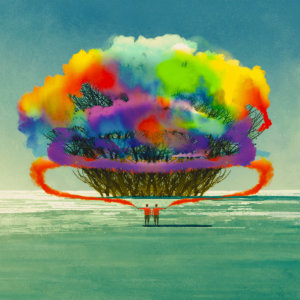Customer Relationships Evolve — So Must Your CRM Strategy
A new way of classifying business relationships can boost long-term profitability.
The relationship between Apple Inc. and Corning Inc. is like a marriage. Corning makes Gorilla Glass, which is in the screen of every iPhone, and the two companies have been together since the iPhone’s introduction in 2007. Each has made extensive commitments to the other.
Corning commercialized the glass, which is strengthened with potassium ions, at the urging of Steve Jobs. When Corning’s CEO, Wendell Weeks, initially hesitated, saying the Corning, New York-based company didn’t have the capability, the notoriously demanding Jobs responded: “Don’t be afraid. … You can do it.” Six months later, Corning delivered. Just last year, Apple responded in kind by making a $200 million research-and-development investment in Corning and its plant in Harrodsburg, Kentucky, that specializes in making cutting-edge glass.
Long-term relationships like the one between Apple and Corning are paramount for the health of any business, and companies spend more than $12 billion annually on customer relationship management, or CRM. But understanding and measuring a company’s return on CRM can be difficult. Customer relationship health is hard to quantify — while many companies rely solely on common metrics, such as sales and profit, to gauge performance, those metrics can mislead. That’s because relationships, like marriages, evolve. A company must not only assess a relationship’s current state but also anticipate potential ups and downs. And — most important but least understood — not all CRM efforts work equally well in all stages of a relationship. Making a big investment in a customer-specific product line, as Corning did with Apple, might help realize the full potential of a promising partnership. But such an investment can be wasted early on if a customer is content to do business at an arm’s length. Similarly, providing an appealing product assortment can help in capturing early customer interest, but, as relationships evolve, communicating the breadth of your offerings becomes less important.
Get Updates on Transformative Leadership
Evidence-based resources that can help you lead your team more effectively, delivered to your inbox monthly.
Please enter a valid email address
Thank you for signing up
For a study that appeared in the Journal of Marketing, we spent six years analyzing the B2B relationships of a Fortune 500 wholesaler that serves retailers around the country. That effort showed us that customer relationship quality can be summarized along four dimensions — trust, commitment, dependence, and norms, each covering a different facet of a relationship. (See “Survey Questions for Relationship Measures.�


Comments (2)
Vinay Ghosh
Dave Angelow